How to grow broccoli microgreens and how is it useful?
Growing broccoli microgreens at home is not difficult at all. This will require organic seeds, a germinator, soil or materials that replace it, a lamp for additional lighting. Within a week, the microgreens will be ready for cutting. Broccoli sprouts can be added to cold soups, salads, sandwiches and vitamin cocktails. This type of microgreen is especially appreciated when carrying out detoxification programs.
Benefits of broccoli microgreens
Broccoli belongs to the cruciferous family. It is these plants that contain a large amount of sulfur compounds (in particular sulforaphane). Sulfur is one of the most important elements for the body. With its participation, the process of cell renewal takes place, the stable operation of all organs and systems is maintained.
By improving the permeability of cell membranes, sulfur helps to remove toxins and waste products outside and facilitates the access of nutrients into the cell. Broccoli sprouts are also rich in other beneficial substances:
- vitamins (A, B1, B2, B5, B6, B9, E, PP, K);
- useful minerals (potassium, magnesium, phosphorus, calcium, iron, etc.);
- sulforaphane;
- kaempferol;
- methionine;
- choline;
Consuming broccoli sprouts on an ongoing basis prevents the development of cancer. The high content of ascorbic acid prevents premature skin aging, activates the immune system. Vitamin K supplied to the body helps to strengthen bone tissue. Due to the intake of potassium, the heart muscle is strengthened, blood pressure returns to normal.
Kaempferol has anti-inflammatory and anti-cancer effects, improves the condition of allergies. Beta-carotene has a positive effect on vision.
A small sprout of broccoli with two leaves contains as many nutrients as one fully ripe head of cabbage.
How to grow broccoli microgreens at home?
For planting on microgreens, regular broccoli seeds will not work for two reasons:
- there are very few of them in the bag;
- the material can be etched with chemical compounds.
It is necessary to purchase planting material intended specifically for germination and obtaining sprouts. Such seeds are packaged in large packages and are not processed with anything. You can always order online. Today many growers trade in seeds for planting microgreens. Often, a tray with a mesh insert is offered as a gift, which serves as a sprout.
The number of seeds required for one sowing is 2-3 tbsp. spoons. They are washed in running water, and then soaked for 8-12 hours, after which they are washed again and sowing is started.
Sowing in the ground
The traditional method involves the use of soil. The container for planting microgreens should have low sides (5-10 cm). Can be used:
- Plastic container;
- glass baking dish;
- a ceramic container of a suitable size.
The substrate can be peat or a mixture of garden soil, peat and coarse sand. For the purpose of disinfection, the soil is pre-steamed in the oven at a temperature of 80–100 ° C for about 30 minutes. After letting the earth cool, it is laid out in a container in a layer 4–5 cm thick, slightly moistened.
Then spread the broccoli seeds over the surface, trying to distribute them evenly. The planting should be tight in order to get enough microgreens in one cycle.
Sowing soil can be used three times.Before reuse, it is necessary to remove from the ground the roots left after cutting the shoots.
Hydroponic method
Broccoli microgreens can be grown without soil. This is known as a hydroponic growing method.
One of the following substrates is placed on the bottom of the germinator as a substrate:
- linen rugs;
- coconut fiber;
- mineral wool;
- jute hay;
- paper towel;
- gauze.
Thin material will need to be folded in several layers to increase the moisture content. Then the substrate is moistened using purified water, and the seeds are spread on it in a continuous layer.
Greenery care
Immediately after sowing, the seeds are sprayed from a sprayer and the container is covered with a film or a transparent lid with holes. After the emergence of mass shoots, the lid is removed, and the container is moved closer to the window or a fluorescent lamp located nearby is turned on.
For illumination, you can also use an LED lamp or phytolamp with a plant-friendly spectrum. In the autumn and winter seasons, microgreens must be illuminated in the morning and evening even on the windowsill.
Watering is best done by spraying, irrigating seedlings 2-3 times a day. In the hydroponic growing method, the water in the sump is regularly replaced with fresh water (during the germination process, the seeds secrete mucus, which becomes a source of unpleasant odor and a breeding ground for bacteria).
The crop is cut 6-7 days after sowing with sharp scissors, by this time 2 true leaves will have formed on the plants. Microgreens grown in the ground must be washed. Hydroponically grown seedlings usually stay clean.
The sprouts do not tolerate heat treatment. Microgreens can be stored in the refrigerator for a while by placing them in a plastic container.
The growing cycle of broccoli microgreens is one of the shortest. The crop can be obtained in a week and start production of sprouts again. By itself, the greens of the culture have a bland taste; they are added to cold dishes, saturating them with vitamins. Having mastered the sowing technology, it will be possible to purchase automated equipment and, if desired, make this interesting and useful hobby your own business.
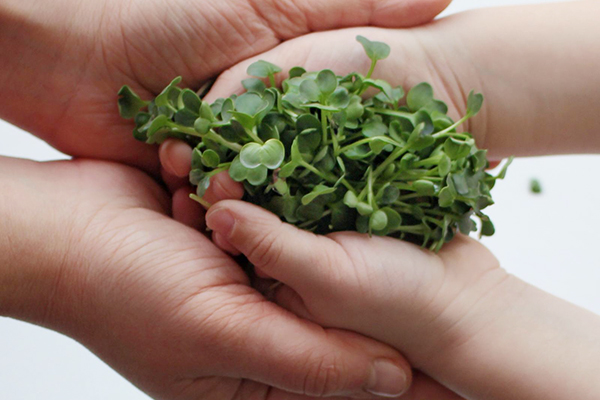
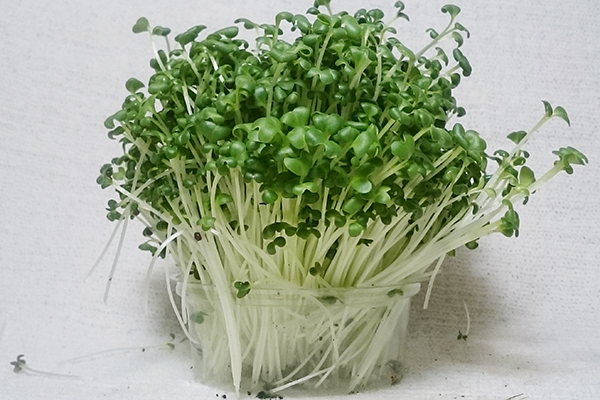
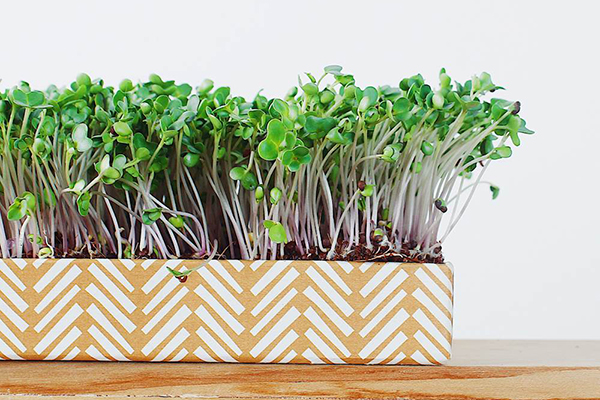

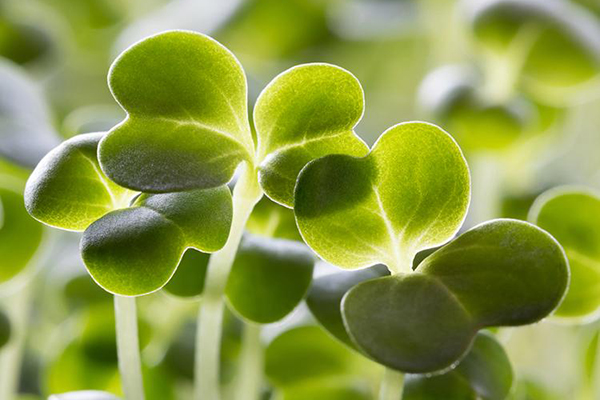
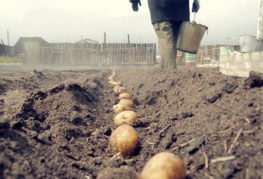

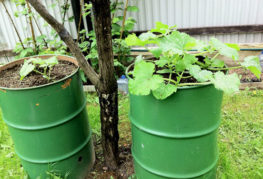



and will be published shortly.